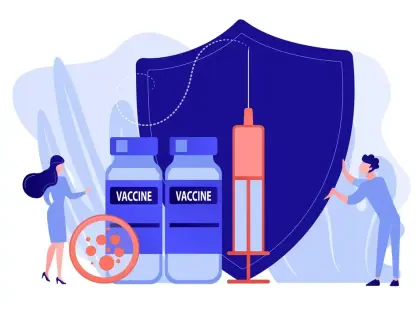As global trade dynamics continuously evolve, Canada’s railway infrastructure stands at a critical crossroads. Recent economic shifts, particularly in trade relations with the United States, have underscored the need for resilience and adaptability within Canada’s transportation networks. The Unifor Rail Industry Council advocates for a comprehensive strategy aimed at fortifying and modernizing these crucial systems. This approach encompasses the enhancement of infrastructure, diversification of export markets, regulatory reforms, and a focus on domestic research. Each of these strategies plays a vital role in ensuring the vitality and security of Canada’s economy in a rapidly changing global landscape.
Diversifying Export Markets
Expanding Capabilities Through Infrastructure Investment
Diversifying Canada’s export markets has emerged as a strategic imperative for reducing economic vulnerability. Central to this effort is the enhancement of existing railway infrastructure, which acts as a linchpin in facilitating the movement of goods across the country. Unifor highlights the importance of expanding capabilities, particularly for raw material exports, calling for significant investment in rail links that accommodate diverse transportation modes from marine to road. By upgrading and expanding the rail network, Canada can increase its capacity to transport goods efficiently, thereby opening new trade avenues that bypass the constraints of heavy reliance on a single market.
A notable aspect of this strategy involves incorporating Canadian-led research to ensure adherence to quality, emission, and safety standards. This approach not only improves domestic supply chains but also strengthens Canada’s position as a quality trade partner. The development of a procurement program that prioritizes value-added production is crucial in this context. It supports the establishment of long-term supply chains, enhancing competitive advantage through product differentiation and improved quality control. Consequently, these investments are positioned to serve dual purposes—fortifying domestic market participation while securing a competitive edge in international trade.
Infrastructure Development for Strategic Routes
A significant part of the diversified export strategy is the development of infrastructure focused on East, West, and North trade corridors. These routes are essential for reducing the logistical challenges posed by Canada’s vast geography. Economic reports, such as those from Statistics Canada, have pointed to the hindrances that long distances present in inter-provincial goods movement. Addressing these barriers requires both governmental support and industry collaboration to create seamless transitions across various transportation systems. Establishing standardized data platforms becomes imperative in managing this complexity. Such platforms will empower industry stakeholders and the general public to optimize transport logistics, ultimately fostering more efficient and cost-effective trade practices.
Efforts to improve infrastructure are not simply about building physical tracks but also involve adopting sophisticated systems for real-time data sharing and logistical coordination. These systems support the planning of routes that maximize efficiency, reduce delays, and limit environmental impact. As government and private sectors invest in technology that integrates multiple transport modalities, the Canadian railway system stands to gain from enhanced operational flexibility and increased throughput capacity. This transformation promises more responsive and robust supply chains capable of adapting to global market demands swiftly.
Enhancing Rail Safety and Capacity
Investment in Safety-Compliant Rail Equipment
The need for increased rail safety and capacity aligns with a broader strategy to meet Canada’s growing energy demands. Particularly concerning the East-West transport of oil, gas, and energy products, rail lines must evolve to comply with updated safety regulations. Unifor emphasizes the introduction of TC-117 class tank cars as a proactive measure. These cars are engineered to meet rigorous safety specifications, thus ensuring safer transit of hazardous materials across Canada’s extensive rail network. By reducing dependency on U.S. routes, Canada enhances its self-sufficiency while guaranteeing compliance with its own regulatory standards.
Moreover, boosting rail capacity to manage current and future demands requires innovative and commercially viable transport solutions. This endeavor not only addresses domestic needs but also fosters a more resilient rail infrastructure capable of sustaining Canada’s energy distribution goals. The investment in safer, more efficient rail equipment is integral to this process, providing long-term benefits such as improved risk management, greater operational reliability, and alignment with international safety benchmarks. This proactive stance positions Canada as a leader in sustainable and secure railway operations.
Regulatory Reforms and Sovereignty
Reforming inter-switching regulations is another crucial step highlighted by Unifor to secure Canadian sovereignty within its railway operations. American companies with unfettered access to Canadian rail lines have presented challenges in terms of competition and national control. Reinstating the dominance of Canadian operators over these lines safeguards domestic interests while promoting fair competition. Such regulatory reforms ensure that the country’s railways are operated in a manner that prioritizes Canadian economic stability and security.
Rethinking regulatory frameworks to prevent foreign dominance in domestic markets aligns with wider national interests. By asserting control over domestic rail operations, Canada can better direct its economic strategies to serve local needs and respond effectively to global trade fluctuations. This reaffirmation of sovereignty underscores the strategic importance of aligning railway operations with national priorities, ensuring that the Canadian rail network continues to serve as a pillar of the country’s economic infrastructure.
Prioritizing Passenger Transport and Innovation
Commitment to ‘Made in Canada’ Initiatives
In parallel with freight transport enhancements, Unifor calls for a concentrated effort on inter-provincial passenger transportation. This strategy involves expanding the scope of ‘Made in Canada’ initiatives through strategic government procurement policies. Building parallel freight and passenger rail lines is key to this venture, designed to alleviate congestion and elevate system efficiency. Such infrastructure improvements serve as a catalyst for fostering Canadian innovation and manufacturing, reinforcing the tech and industrial sectors.
Moreover, these investments ensure technological developments, from trains to aviation, are rigorously tested within Canadian borders before being rolled out. This approach not only reaffirms Canada’s commitment to self-reliance but also enhances its capacity for innovation and maintenance. Strategic alignment of passenger transport technology ensures seamless integration across various modes, further contributing to a streamlined and interconnected national transportation framework. It’s an ambitious step toward realizing holistic transportation solutions that incorporate all facets of mobility.
Integrated Transportation Networks
The vision for a fully integrated transport system extends beyond railway developments. Building infrastructure that connects all passenger modes—from rail to aviation—at centralized nodes is crucial. Such connectivity requires coherent policy guidance at provincial levels to ensure uniformity across the nation. The Montreal data hub and app initiative exemplify this integrated approach, offering a comprehensive travel planning tool that simplifies passenger experiences across multiple transport channels.
This transformation of transportation logistics into a unified system offers far-reaching benefits, including reduced travel times, increased convenience, and lower environmental impact. The interconnected networks allow Canada to position itself as a leader in transportation innovation, addressing urban and rural mobility challenges effectively. Ensuring that these systems work in harmony highlights the necessity for ongoing investment and collaboration between public and private sectors, with the ultimate aim of elevating Canada’s transport infrastructure to meet contemporary challenges.
Domestic Research and Labor Protections
Tailoring Research to Canadian Contexts
The robustness of any transportation strategy is invariably tied to continuous research and development. Excessive reliance on foreign research frameworks poses risks that could compromise Canada’s unique logistical needs. Unifor insists on expanding domestic research capabilities to generate homegrown solutions, which are tailored to withstand Canada’s distinctive climatic and geographic challenges. Fostering such research promises to boost efficiency, resiliency, and cost-effectiveness in the rail sector, providing a solid foundation for future growth.
By focusing on domestic research, Canada can craft policies and technologies that cater specifically to national requirements, offering the flexibility to adapt to evolving market conditions. This strategic direction bolsters Canada’s capacity for innovation, addressing potential supply chain disruptions while paving the way for developments that reflect Canadian values and priorities. In doing so, a uniquely Canadian approach to transportation challenges can be cultivated, driving sustainable economic growth and competitive advantage on a global scale.
Labor Rights as Economic Stabilizers
Canada’s railway infrastructure finds itself at a critical intersection as global trade dynamics continue to shift. Changes, especially concerning trade with the United States, highlight the essential need for Canada to build resilience and flexibility into its transportation networks. The Unifor Rail Industry Council strongly advocates for a strategic and comprehensive plan to both strengthen and modernize these pivotal systems. The proposed approach involves multiple key strategies: upgrading infrastructure to meet contemporary demands, not just maintaining it; branching out to export markets beyond traditional partners to broaden economic horizons; implementing regulatory reforms to streamline processes, reduce inefficiencies, and enhance safety; and fostering domestic research to drive innovation and technological advancement within the industry. Each element serves as an integral part of ensuring the robust health and security of Canada’s economy amidst a fast-evolving global trade environment.









